How the flu virus infects? August 13, 2009
Posted by Vasudevan in Technology news.Tags: h1n1 virus, harward medical school, how flu, swine flu
add a comment
Came across an interesting presentation on how the flu viruses infect us. The presentation is by the Harward medical school. This is highly relevant now as the entire world has been stuck by the H1N1 virus.
Step 1
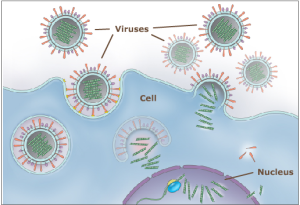
Influenza viruses are tiny infectious agents. Like all viruses, they cannot live and reproduce unless they infect and get inside our cells. Here you see influenza viruses outside and inside a cell. Let’s see, in eight steps, what happens when a virus infects one of our cells.
Step 2
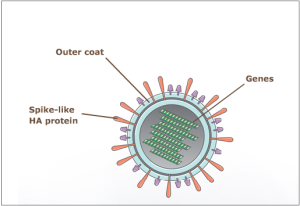
Every virus is a bunch of genes wrapped in a coat of proteins. In viruses, the genes can be made of DNA or RNA. The genes of an influenza virus come in eight rods made of RNA. The outer coat of the flu virus looks a little like a burr that sticks to your socks after a walk in the meadow. In fact, the little spikes we colored brown, called HA proteins, are what stick to the cells in your nose, throat, or lungs.
Step 3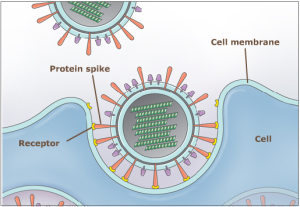
The brown protein spikes grab onto little yellow v-shaped structures (called receptors) on the outer wall of your cell (the cell membrane). The tip of the spike is like a key, and the receptor is like a lock: if the key fits the lock, the virus sticks to your cell. If it sticks, it then is able to enter your cell.
Step 4

Once the virus is inside your cell, it travels through main part of the cell, the cytoplasm, heading toward the center of the cell, the nucleus.
Step 5
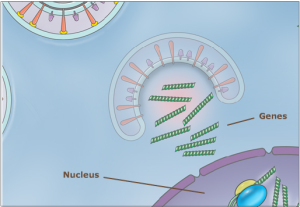
As the virus nears the nucleus, it starts to come apart. Its genes enter your cell’s nucleus, along with chemicals called polymerases that can copy and multiply its genes.
Step 6

Once inside the nucleus, the viral genes start to use your cell’s energy supply and the chemicals called polymerases to make thousands of copies of themselves. Then they move out of the nucleus and back into the cytoplasm of your cell.
Step 7
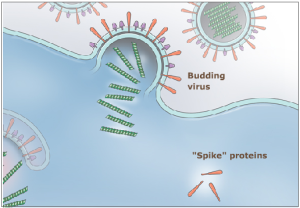
In the cytoplasm, the virus’s genes make lots of new viral proteins, including the brown protein spikes. The genes and the proteins move toward the cell membrane and form into new viruses—thousands of them. And these viruses have a new mission: they need to break free of the cell they are in and go on to infect new cells. They push out against the membrane of the cell, forming little buds, trying to get free.
Step 8
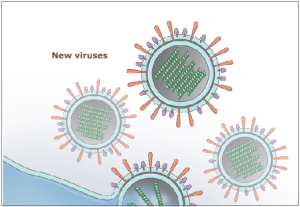
Most of the budding viruses do get free: little chemical scissors cut them loose, allowing them to find new cells to infect. And so the same cycle we’ve just seen begins again, in another cell. When you get a flu infection, in the first few days millions of new viruses infect millions of your cells—until your immune system comes to the rescue and eliminates the infection. That’s it: that’s how a flu virus infects your cells.